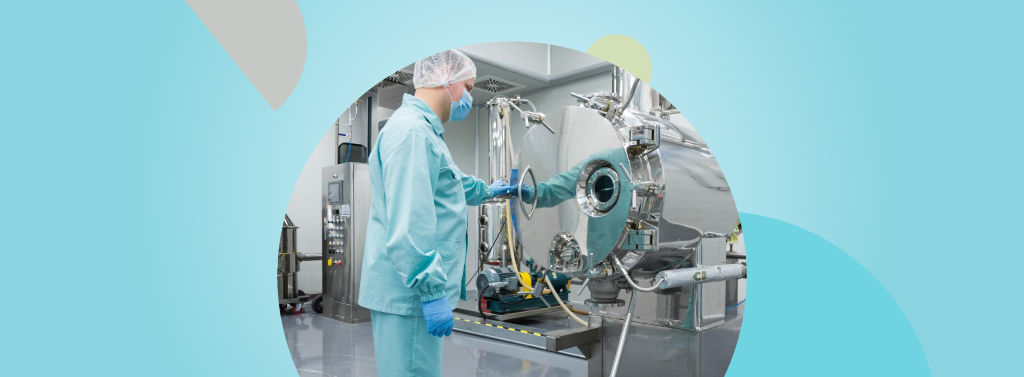Electric vehicles made significant inroads in the U.S. market in 2023.
A record 1.2 million buyers opted for EVs, demonstrating strong growth from the 5.9% market share in 2022. This surge brings the total EV share of the U.S. vehicle market to 7.6%, according to estimates.
Lithium-ion batteries (LIBs) are an essential source of energy for electric vehicles, propelling the goals of an emission-less, more sustainable future. Their reusability makes them effective for critical supply chains and eases the burden of e-waste in the environment.
However, traditional lithium extraction methods involve energy-intensive processes like mining, evaporation ponds, and chemical treatments. To solve this, the Direct Lithium Extraction (DLE) technique has emerged as a favorable alternative.
The article highlights the specific DLE techniques and some viable solutions for EV battery recycling.
DLE Extraction: A Quick Glance
The increasing demand for EVs necessitates sustainable and efficient methods of recycling end-of-life EV batteries. As noted above, DLE technologies offer a promising solution for extracting and recovering valuable lithium from spent batteries.
Why Does DLE Matter for EV Battery Recycling
- Efficiency: Traditional recycling methods involve lengthy, energy-intensive processes with lower lithium recovery rates. DLE offers faster, more efficient extraction with higher purity levels. This speeds up the EV battery recycling process.
- Environmental Sustainability: It reduces reliance on unsustainable lithium mining practices and minimizes waste generated during recycling.
- Scalability: DLE technologies can be adapted to process large volumes of battery waste, meeting the growing demands of the EV industry.
EV Battery Recycling: Top DLE Techniques
Now, let us focus on the key DLE techniques used for EV battery recycling:
Adsorption-based techniques
Ion exchange resins
This technique uses ion exchange resins to absorb lithium ions from the brine or leachate solution, providing a cost-effective and efficient method of EV battery recycling.
- Purolite is a leading manufacturer of such resins, which are specially designed for lithium extraction from brine solutions.
- Some engineered molecules or polymers are also employed to extract lithium ions, which fall under the category of molecular recognition technology. For example, LiTHIUM-X is such a polymer developed by EnergyX, a US-based firm.
Solvent extraction
Liquid-liquid extraction
In the solvent extraction method, the lithium ions are transferred from an aqueous phase to an organic phase using ionic liquids.
- Neometals have developed an Eli Electrolytic Lithium process for the recovery of lithium ions from used batteries.
- Some developments are also focused on liquid membranes, which can only allow selective lithium extraction using porous materials.
Summit Nanotech, a Canadian firm, is working on such a membrane. They have developed a liquid membrane technology called “LiNano SLM” for lithium recovery/ DLE from spent EV batteries, using lithium-selective nanoparticles or carriers on a porous substrate.
Membrane-based techniques
Nanofiltration
Some semi-permeable membranes have been developed by Adionics to separate lithium ions from other impurities.
Additionally, reverse osmosis techniques exhibit the potential to separate the lithium ions using high-pressure membranes. This technique uses semi-permeable membranes to separate lithium ions from other ions and impurities based on their size and charge.
Electrochemical techniques
Electrochemical deposition
Lithium ions are selectively deposited on an electrode surface from a solution, allowing for concentrated lithium recovery.
Lilac Solutions, a California-based lithium extraction technology company, has developed an electrochemical deposition process for lithium recovery. This process can be applied to various lithium-containing sources, including spent EV batteries, to recover lithium metal.
Capacitive deionization
This technique uses electrode materials with high surface areas to selectively adsorb lithium ions from solutions, enabling lithium recovery for EV battery recycling.
Biology-based techniques
Biosorption
Certain microorganisms or biomaterials (e.g., algae, fungi, or modified agricultural wastes) can selectively bind and concentrate lithium ions, enabling lithium recovery from various sources.
Bioengineered systems
Genetically engineered microorganisms or enzymes can be designed to capture and concentrate lithium ions precisely, offering a sustainable and environmentally friendly approach for EV battery recycling.
EV Battery Recycling: Key Developments
Now, let’s review some of the latest developments in this field:
Direct disassembly
Direct disassembly is a vital initial step in EV battery recycling. Dismantling the battery pack is required to access individual cells or modules for further processing.
However, a key challenge arises from the residual energy stored within these batteries. Disassembling live batteries poses safety risks, such as potential short circuits, thermal runaway, or even explosions.
To mitigate these risks, deactivation or discharging of LIBs is recommended before disassembly. This involves carefully reducing the state of charge (SOC) to extremely low levels (ideally less than 2% or even 0%) to minimize the potential for rapid energy release.
Material Recovery
Material recovery prioritizes high-value cathode active materials like Co, Ni, Al, and Cu. Electrolyte recovery is possible using low-temperature techniques but typically burnt for fuel energy in a pyrometallurgical process.
Plastic recovery is also achievable but not economically attractive.
On the other hand, hydrometallurgical recovery methods are promising, with high metal recovery rates, high product purity, minimal energy consumption, and low gas emissions, typically involving leaching and metal recovery.
Material Separation and Recycling
Inorganic acid leaching, using agents like H2SO4, HCl, and HNO3, is a standard method for battery recycling. It transfers high-value metals from cathode active materials like Co, Ni, Li, Mn, Cu, Al, and Fe into the leaching solution.
However, separating these components into a complex solution is challenging. Therefore, multiple metal recovery techniques should be combined for effective extraction.
To Sum It Up
DLE technologies have the potential to overhaul lithium extraction. It promises to nearly double lithium production with higher recovery rates, improve project profitability, and offer significant ESG/sustainability benefits.
Additionally, this can ease the bottlenecks in the lithium supply chain by expanding production capacity. However, further research is needed to improve efficiency, scalability, and cost-effectiveness.
Combining DLE with hydrometallurgical processes can promote a circular economy and standardize battery dismantling and deactivation protocols. Moreover, these processes, particularly when integrated with renewable energy sources, can further lower the carbon intensity of lithium extraction.
